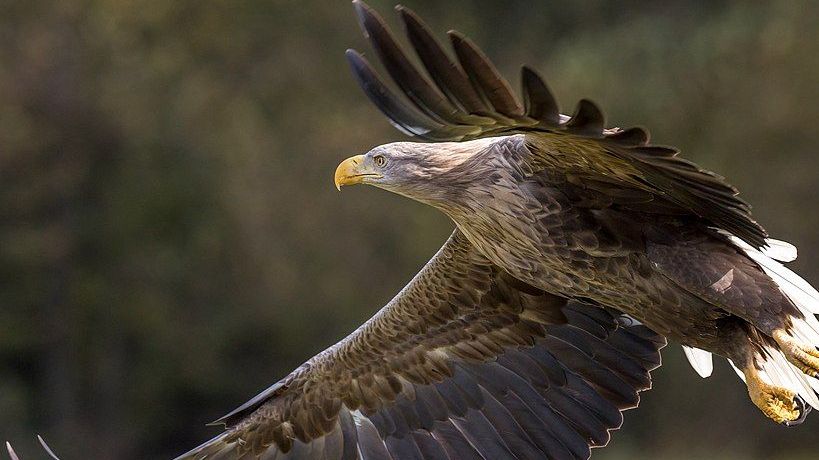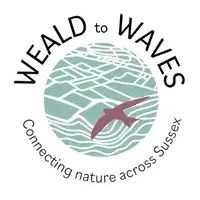A majestic comeback
By Libby Drew & Cathy Robinson - 20 July 2023
White-tailed eagles, also known as sea eagles, are making a remarkable comeback in the southern region of England after an absence of almost 250 years. With their impressive 8ft wingspan, these birds are the largest in the UK and leave an indelible memory with anyone fortunate enough to catch a glimpse of their soaring flight. Once a common sight across the entire country, including southern England, the species were wiped out due to human persecution, with the last recorded bird being shot in Scotland in 1918.

Following a successful reintroduction of white-tailed sea eagles in the Scottish Islands in the 1970s, the Roy Dennis Wildlife Foundation and Forestry England initiated a reintroduction programme for England in 2019.
The Weald to Waves (W2W) team recently met up with White-Tailed Sea Eagle Project Officer, Steve Egerton-Read, who painted a colourful picture of the project’s journey to date.
The programme began by releasing six juveniles hatched in Scotland to a secluded area on the Isle of Wight. The aim was to establish a breeding population of white-tailed eagles along the south coast. Since then, the project has seen the addition of more juveniles each year, with two pairs of eagles forming bonds. Over the last week, there has been joyful news of the first chicks born in England for the first time in more than 240 years. This huge success is a tribute to the hope and commitment of a project that has taken years of planning and persuasion to bring to life. The long-term goal is to reintroduce a total of 60 eagles, with the hope this will lead to more breeding pairs in the coming years.
Two birds, released in 2020, tagged G471 and G405, have been spotted regularly in the Arun valley arm of the W2W corridor, where they hunt for fish over vast wetlands. Their diet also includes birds, small mammals, rabbits, gulls, and carrion, making them important for maintaining balanced populations of these species. Their presence signifies a revival of an ecosystem that was disrupted when the original white-tailed eagle population was eradicated.
Despite understandable but often overestimated concerns about the impact on farming, fisheries, and existing species, recent surveys conducted by Forestry England indicate a positive shift in public perception. An overwhelming 93% of respondents expressed support for the current reintroduction project, with more than 90% expressing interest in further species reintroductions in southern England.
The reintroduction of white-tailed eagles carries historical significance, as these birds were once an integral part of the Sussex skies. However, persecution and habitat loss led to their disappearance from the region, with the last known pair recorded on the Isle of Wight in the late 18th century. The presence of these eagles offers hope for a revival in Sussex, alongside other native raptors like the osprey, which occasionally utilise the Arun valley as a migratory route.
The W2W project, encompassing river catchments and vital habitats for wildlife, serves as a key indicator for habitat fragmentation and landscape recovery. Observing the white-tailed eagle soaring along this corridor is a sight that captivates the imagination, reminiscent of "flying barn doors." To contribute to ongoing research and conservation efforts, individuals who spot these eagles are encouraged to report their sightings on the Roy Dennis Wildlife Foundation website.
The return of the white-tailed eagles not only completes an important missing piece of the UK's natural ecosystem but also highlights the significance of creating connected corridors of habitat for the benefit of all wildlife. The eagles’ presence in the RSPB wetland site at Pulborough Brooks and along the corridor adds an exciting dynamic to the W2W skies. On occasion, they share the space with wild storks, a testament to the positive transformations occurring within the region. As we eagerly anticipate further nesting in the coming years, the revival of these magnificent birds serves as a symbol of successful species reintroduction and the power of conservation initiatives in restoring ecosystems to their former glory.
You can also share your images with Forestry England by tagging @SeaEagleEngland on Twitter and Instagram. With the welfare of the birds in mind, they ask that exact locations are not shared with any images.
Photo credit: Adult white-tailed eagle, Andreas Weith

